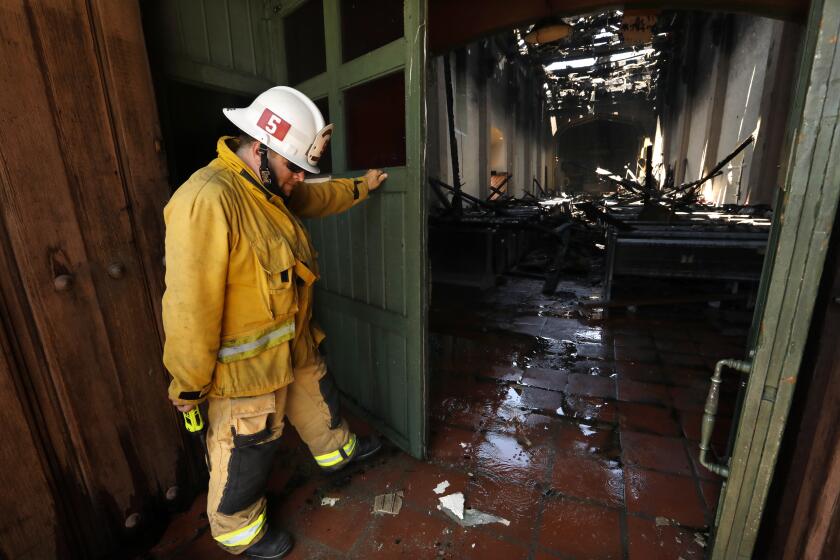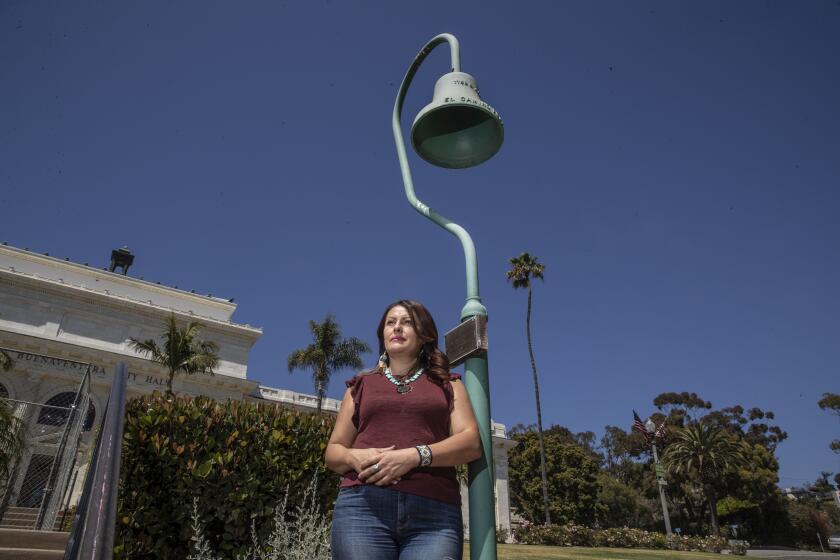A little more than two years after a devastating fire, the San Gabriel Mission is nearly restored
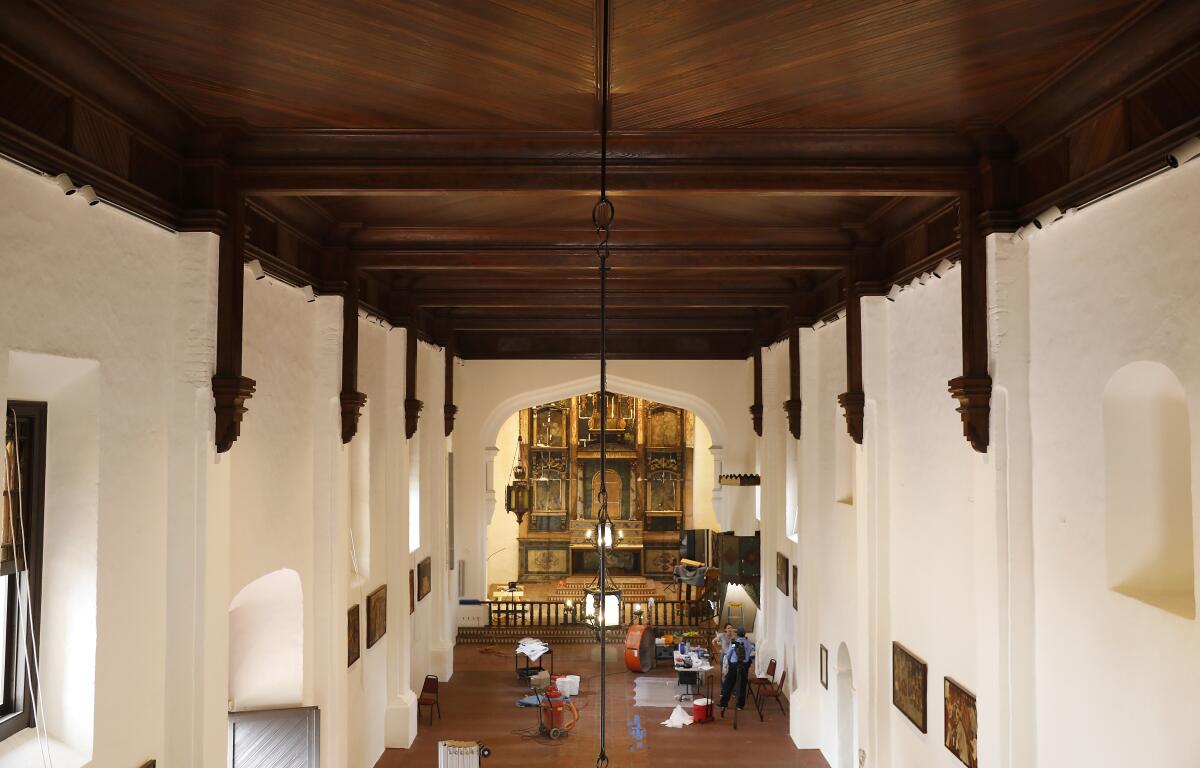
- Share via
Twenty-six months after an act of arson destroyed the roof and heavily damaged the San Gabriel Mission, the 251-year-old historic venue will temporarily reopen Saturday.
Mission clergy and staff allowed guests the first look inside the Roman Catholic house of worship, post fire, on Thursday, showing off repainted and replastered adobe walls, reworked windows with glass from Germany and a new redwood ceiling.
“Ever since the fire, there has been an anxiety as to what our beloved mission would look like,” said Father John Molyneux, 66, the parish pastor. “I’m very excited to say it will be very close to what parishioners experienced before the fire.”
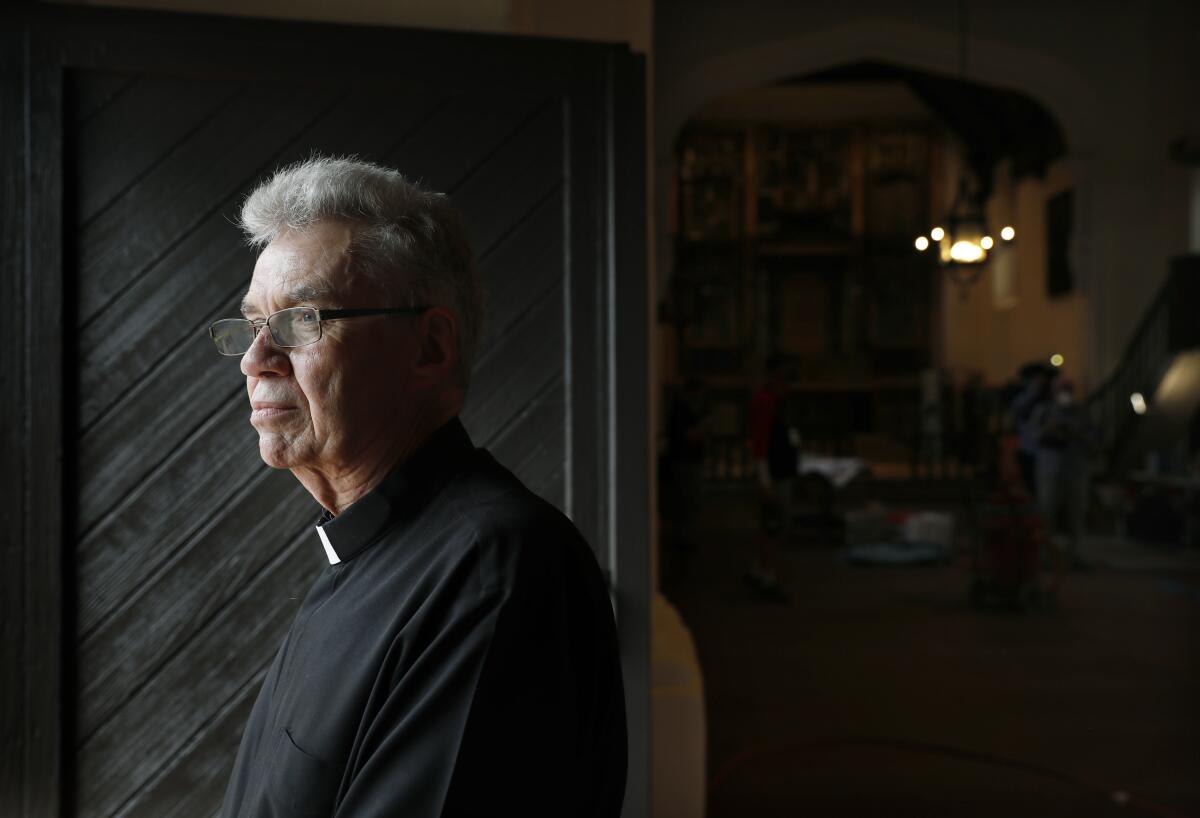
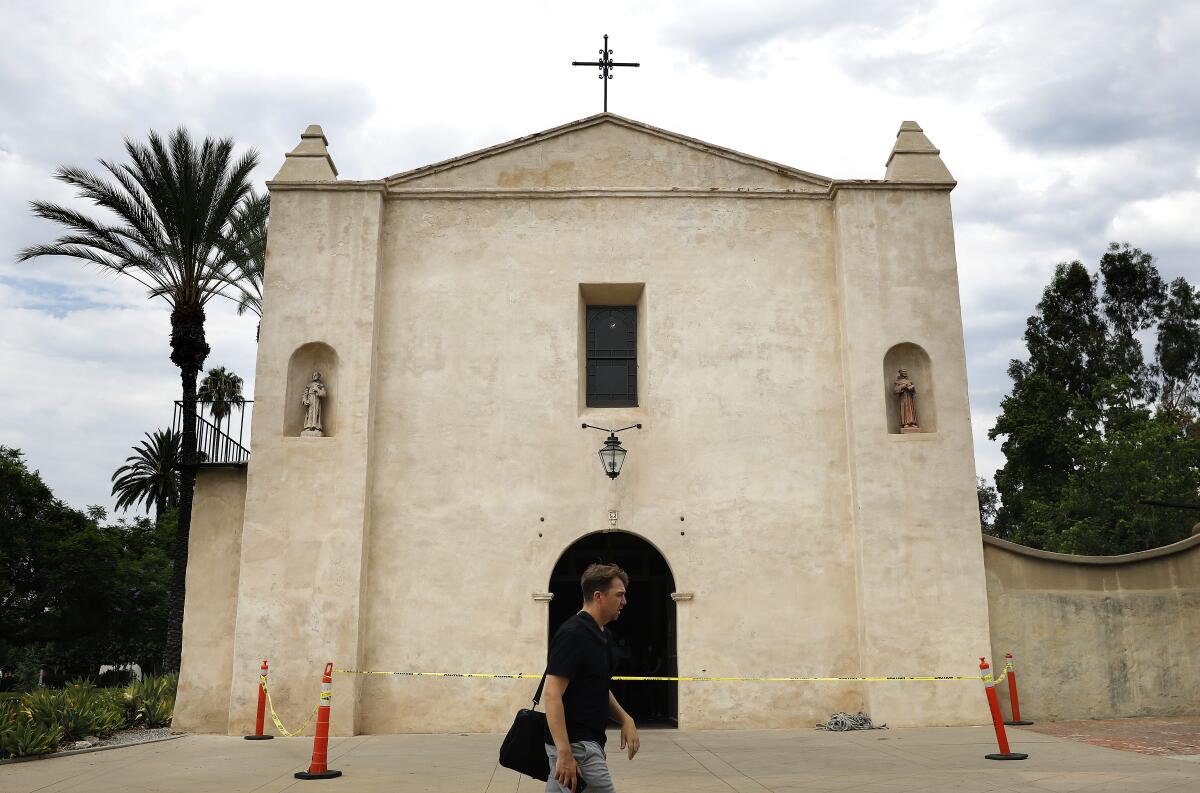
The San Gabriel Mission is hosting a private, invite-only Mass Saturday at 10 a.m. presided over by Los Angeles Archbishop José Gomez. The service will be livestreamed to visitors in the adjacent chapel and can be viewed online at https://lacatholics.org/jubilee/
The mission will then close again so that delicate religious relics and murals behind the altar can be restored in a dust-free environment. Restoration experts are also still repairing the altar rail and pulpit.
The goal is to permanently open the mission by early December, according to archdiocese spokesperson Adrian Marquez Alarcon.
A massive fire that ripped through the historic San Gabriel Mission early Saturday destroyed its roof and much of its interior, authorities say.
Since the fire, the mission and surrounding vineyard, cemetery, garden, museum and gift shop have been closed. Weddings and fourth-grade tours conducted by docents were also halted.
“There is a real excitement from people from so many communities to return to their mission,” said Terri Huerta, the mission’s director of development and communications. “We just want to encourage visitors to manage their expectations. The mission is back, but a little different than before.”
Much of what was damaged in the fire was salvaged and refurbished.
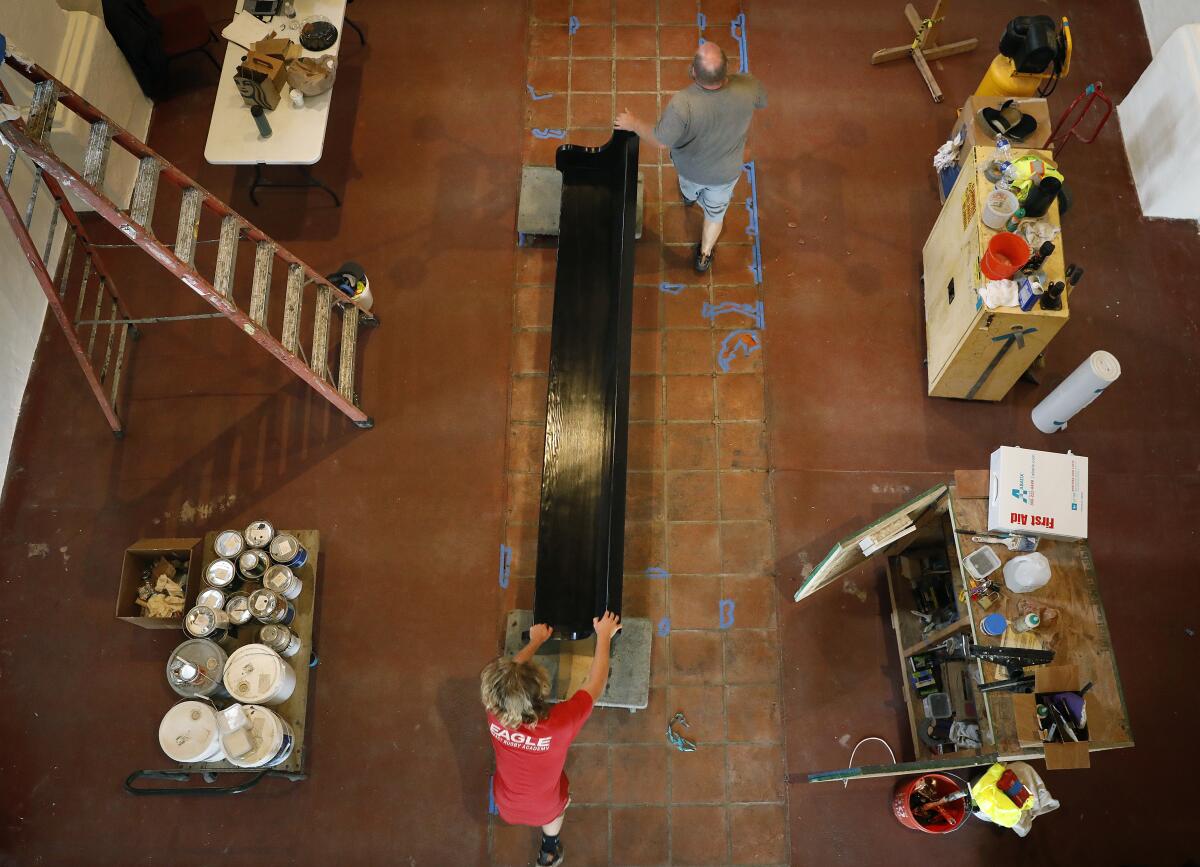
Steel retrofitting beams installed in the 1990s that were badly warped have been replaced, Huerta said. Three major chandeliers were repaired as was a Wurlitzer organ donated in the 1920s. Some pews were fixed, while others were replaced.
The original tiles in the sacristy and in the baptistery were not able to be saved, however, because they were ruined by flooding in the aftermath of firefighting efforts.
Huerta estimated the total price for repairs at $7 million, with most of the cost covered by insurance.
The church also raised a little more than $400,000, which is being used to install track lighting and upgrade the sound system.
Mel Green, a structural engineer specializing in historic restoration, oversaw much of the work. Green has been involved with mission restoration since the 1987 Whittier Narrows earthquake cracked much of the church walls.
“From a pretty purist standpoint, the building is going to look very much like it did in the mid-1930s,” Green said. “We have much documentation and photos from that era and can even match up the color of paint used then.”
The blaze that ravaged the mission was set shortly after 4 a.m. on Saturday, July 11, 2020, destroying just-refurbished church pews and severely damaging the adobe-and-brick walls.

A nearly yearlong investigation identified local John David Corey as the man responsible for starting the fire.
Churchgoers congregated shortly after the fire on the concrete parking lot, where they prayed the rosary, shared stories and lamented the loss.
News of the church’s progress has stirred hope for a full recovery.
“The San Gabriel Mission has been my family’s place for peace and devotion,” said San Gabriel resident Mary Cammarano, 82, a 58-year parishioner and former docent. Cammarano plans to attend Saturday’s Mass despite undergoing recent knee surgery that left her with pain and limited mobility.
The San Gabriel Mission has often been considered the spiritual home of Roman Catholicism in Los Angeles, as it was the fourth of 21 Spanish missions built in California, and first in the area, during the late 18th and early 19th centuries.
It was founded by controversial saint Junípero Serra, viewed by some as a colonizer and others as a protector of Indigenous peoples. Construction of the mission by Spaniards and Kizh Mission Indians of San Gabriel was originally completed in 1771, just outside of what is now Montebello, and moved four years later to San Gabriel.
Latinos have served as the most vocal detractors and defenders of Junípero Serra over the last few months in a fierce debate about the saint’s legacy.
It predates the founding of the United States in 1776 and of Los Angeles in 1781. On Saturday, the mission will complete a jubilee year of celebrations marking 250 years in service.
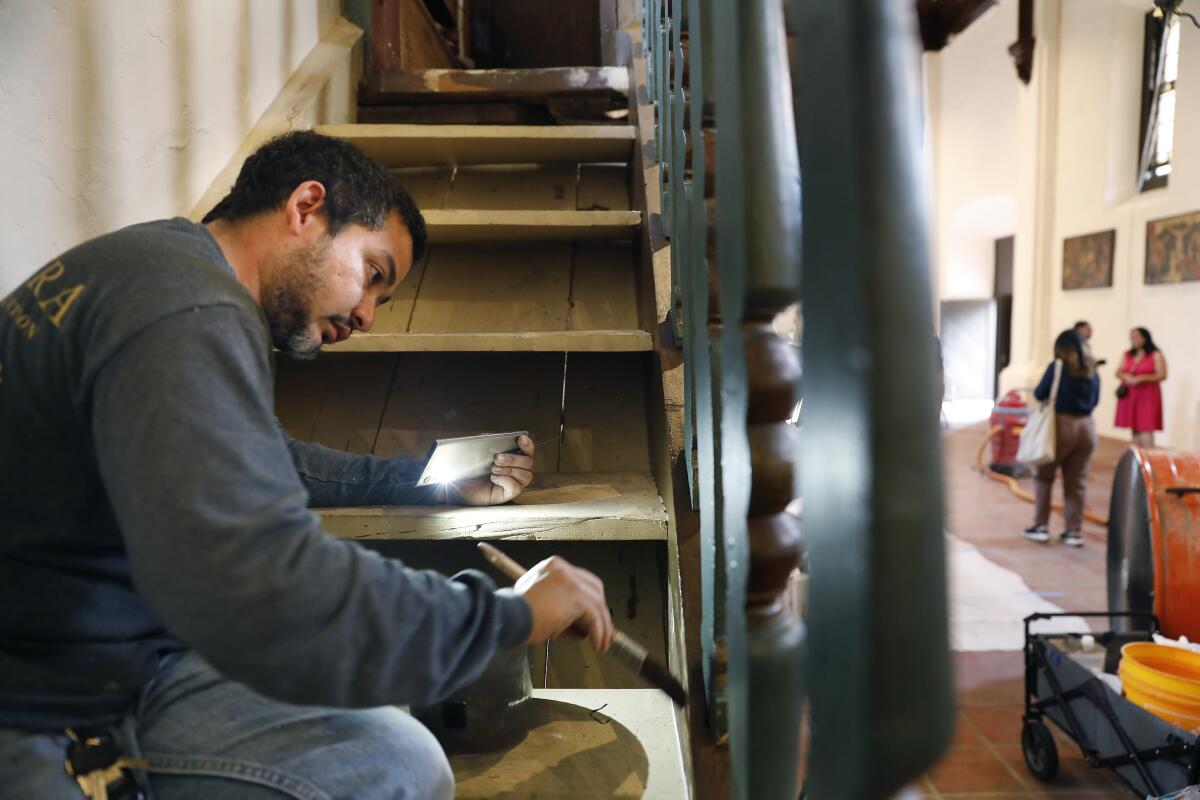
Parishioner Ortencia Ramirez remembers crying the morning of the fire, as she stood on the church grounds surveying the destruction. She turned 68 that day and thoughts of birthday candles were replaced by visions of billows of smoke exiting from her “second home.”
Now, a little more than two years later, Ramirez feels blessed to see the mission recover.
“A couple of days ago they removed the scaffolding and the fence and it was beautiful,” said Ramirez, who had her two children baptized at the parish. “It feels like a family member has come back to us.”
More to Read
Sign up for Essential California
The most important California stories and recommendations in your inbox every morning.
You may occasionally receive promotional content from the Los Angeles Times.
